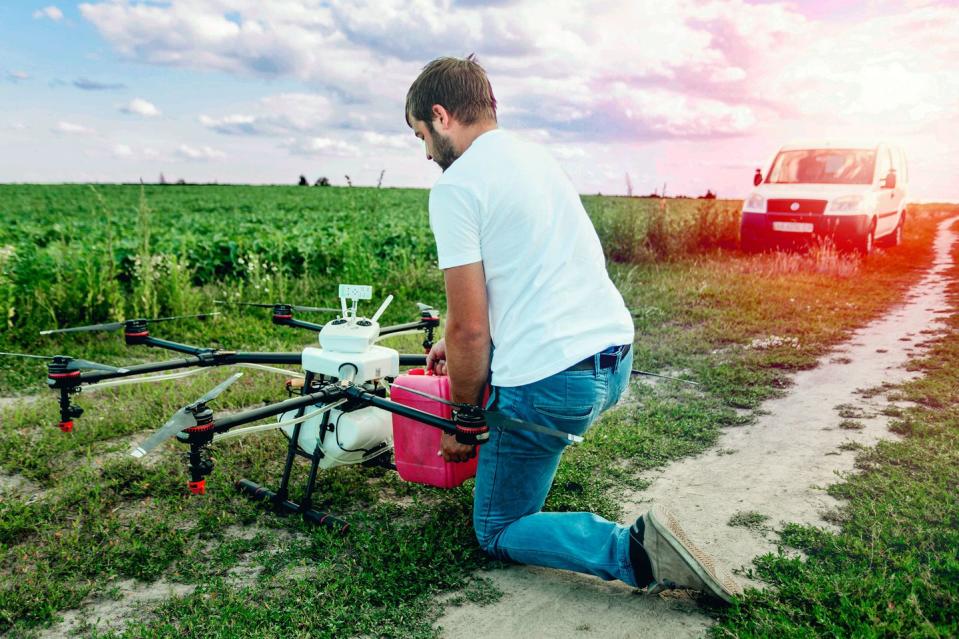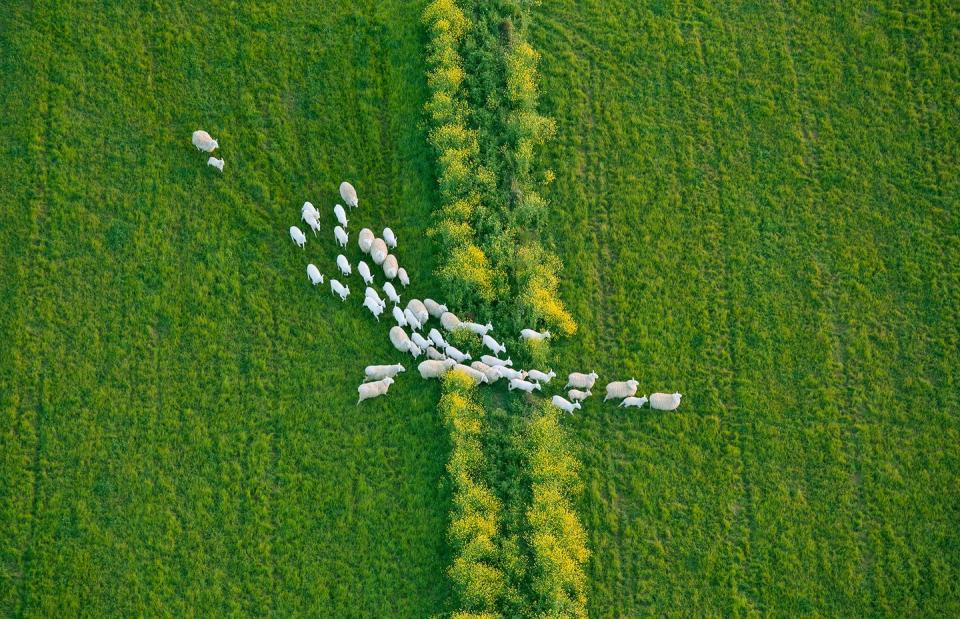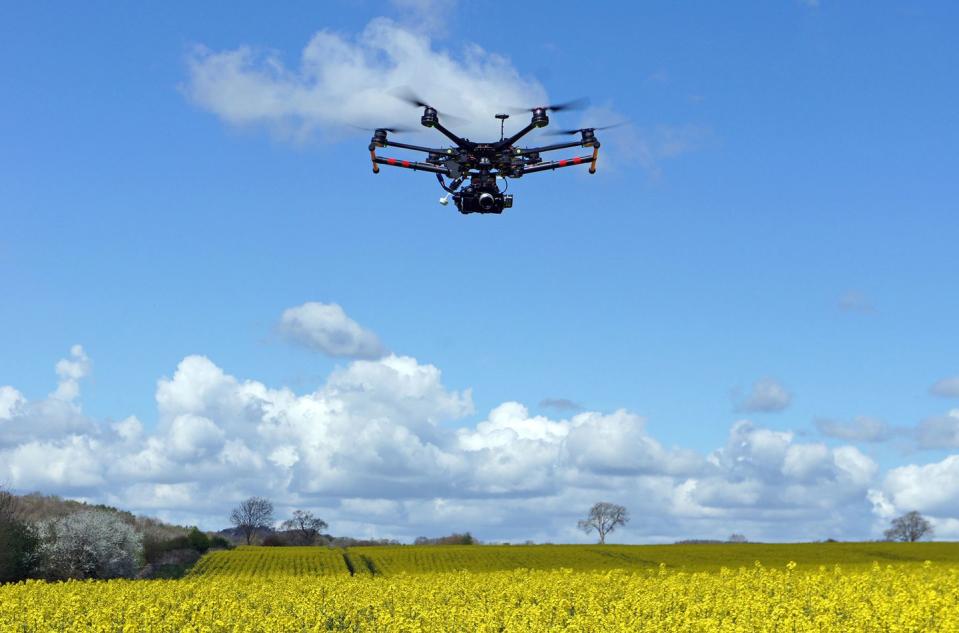What drones mean for farming and the countryside

Already used by more than 18% of UK agricultural businesses, drones are changing the way we can grow crops and tend livestock, but what are the long-term implications?
What are drones?
Drones – or unmanned aerial vehicles (UAVs) – are, as the name suggests, essentially sophisticated remote-controlled aircraft. They can range in size from just a few centimetres up to 14 metres, but in most cases are just over half a metre long.
The term ‘drone’ was coined in reference to the small aircraft used for the target practice of battleship guns in the 1920s. Although most people will have first heard of drones in connection with military use overseas, they are now being utilised more frequently for routine tasks much closer to home.
Agriculture is one area where they have proved to be incredibly valuable, undertaking myriad tasks such as soil analysis, targeted application of pesticides and fertilisers, storm tracking, safety reporting, pollution control and air monitoring.
First used by farmers in Japan in the 1980s, specifically designed ‘agricultural drones’ are now available with a huge variety of functions and capabilities – basic models cost just £50, while more state-of-the-art devices can exceed tens of thousands of pounds.

Why are drones in the news?
Due to improvements in technology and competitive pricing over the past five years, the use of agricultural drones in this country has increased dramatically and concerns about the risk they pose to safety and privacy has grown with it.
During this period, the number purchased hasn’t been monitored, so it’s difficult to quantify that growth. However, last year a farm in the UK was the first in the world to successfully plant, tend and harvest a 4.5 tonne crop of barley without a single person ever setting foot in the field.
The Hands Free Hectare Project, as it was known, was undertaken by engineers at Harper Adams University, who hope to repeat its success this summer. Although this project, as well as others, demonstrates the benefits of using agricultural drones, issues are being raised in relation to the lack of legislation and regulations.
What are the benefits to farmers?
In today’s world, where it can be increasingly challenging for small-scale farms to remain financially viable, the help provided by technology such as drones can be invaluable. It may feel like a long way from traditional farming practices, but being able to monitor livestock remotely or apply the correct amount of fertiliser, down to the last millimetre, can make a much-needed difference.

Drones can also be used in the popular farming management concept known as ‘Precision Agriculture’, which would otherwise be inaccessible to smaller farms. The list of what drones are capable of seems almost endless – having an aerial view of farmland, for example, can help to identify problems, such as irrigation issues, much quicker than if it was checked from ground-level.
Some drones are also capable of spraying crops with pesticides more accurately than a traditional tractor. This not only reduces costs, but lessens the exposure of workers and the surrounding countryside to potentially harmful chemicals.

What are the drawbacks?
Concerns surrounding agricultural drone use relate predominantly to privacy, trespassing and the damage to property and livestock. These worries are compounded by the fact that this form of technology is so new that laws and regulations are still in their preliminary stages.
Guy Smith, vice president of the National Farmers Union (NFU), commented that while exciting developments could keep British farming at the cutting edge and internationally competitive, the government also needs to take into consideration issues such as antisocial misuse and introduce measures to protect farmers and landowners.
Ross Murray, president of the Country Land & Business Association (CLA) – which represents landowners, farmers and rural businesses – also voiced concerns as to whether drones being flown over private property or land are being operated legally, professionally and safely. There are also worries that increased use may have a negative impact on the number of jobs available to agricultural workers.

What do drones mean for the future?
With sales predicted to exceed 1 billion worldwide by 2024*, the popularity of agricultural drones shows no signs of slowing down. As technology becomes more advanced and far-reaching, UAVs will have the capacity to help farmers in a variety of new and valuable ways.
Researchers at Imperial College London’s Department of Life Sciences, for example, are developing drones that could detect plant disease before any visible signs – such as leaf discolouration – show, allowing farmers to stop infections before they cause too much damage to crops. The hope is that government legislation will soon catch up, ensuring drones are operated safely and responsibly.
However, for now, there are a number of privately run courses available to farmers who would like to learn about the safe operation of agri-drones (as they are sometimes known), such as the one run by independent auditing organisation BASIS – visit basis-reg.co.uk to learn more. The Civil Aviation Authority (CAA) also provides information and authorisation for non-commercial drone use here.
This feature is from Country Living Magazine. Subscriber here.
You Might Also Like


